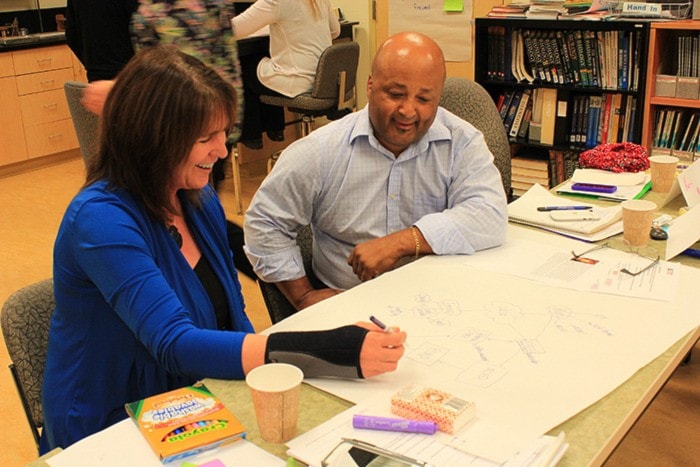In 2011 the Kootenay Boundary Community Services Co-operative initiated the Coordinated Response for Child and Youth Victims (CRCYV) project to build collaboration in support of how the needs of child and youth victims of abuse, violence and neglect are being met in the West Kootenay Boundary area.
The goal of the project is to improve access to services and help to coordinate the various agencies currently in place into a more unified and cohesive approach to providing essential services to children and youth in need.
Lynda Dechief, the CRCYV Regional Coordinator, explains that service providers in the West Kootenay Boundary region are united in their desire to “see that when a child comes forward as a victim that they get a response quickly.”
They want to see the response be seamless; that word came up in all of the communities. They don’t want anyone to fall through the gaps, but also have no overlaps in service.”
The multi-phase process of CRCYV began with the administration of a Feasibility Assessment in 2011 to determine if a traditional Child Advocacy Centre, the model used in urban centers, would be practical in a larger geographical context.
The centre would have been located centrally, likely Castelgar, and would seek to serve the other four areas across the West Kootenay Boundary region, including greater Trail, Nelson and area, Nakusp and area and the Boundary.
However, the results of the assessment determined that a stationary centre could not effectively serve the large proposed area. “We are a really geographically large and dispersed region” Dechief says, “People want to access services in their own communities through the agencies that they already trust.”
This prompted the movement into stage two, which saw agencies across the districts collaborating on a preliminary program model in 2012, which focused on the collective interest in a regional coordination and collaboration model that would not involve a central location.
The working group, which included stakeholders from all the geographic areas and various agencies involved, shaped the vision of collaboration and identified goals and strategies that would guide the CRCYV program.
The third phase of the project involved hiring Lynda Dechief as the CRCYV Regional Coordinator to implement the regional coordination initiative. She helped create a network in the proposed region of “local coordinators who get together monthly” and identifies the “flowing of information, what one person called cross pollination, is really prevalent to the project as a whole.”
On June 3, Dechief opened up the conversation to the core group of district service providers and hosted a workshop at Nakusp’s Selkirk College. This workshop was the second stop on her tour of the five areas under the umbrella of the project, and was an opportunity to discuss how local agencies can strengthen coordination in their area and how they want to fit into the regional initiative.
The workshop was organized by Nakusp and Area Coordinator, Carol Bell and attended by Ministry of Children and Family Development, RCMP, School District 10, Arrow and Slocan Lake Community Services, ARC Program, Nakusp and Area Youth Society, Freedom Quest and the Circle of Indigenous Nations Society.
Dechief acknowledges that the direct services in Nakusp and area “already know each other, and already have relationships built” and focused the workshop on strengthening their coordinated efforts and developing the larger regional vision with “unique community plans as well.”
The day-long workshop provided the opportunity for members of the response team to build on the work of the CRCYV by taking steps to confirm and employ the strategies and goals outlined by the preliminary program model in the Arrow and Slocan Lakes area within the context of the greater West Kootenay Boundary region.
“This is nothing new” Dechief comments, “we are not inventing anything. We are just supporting what is already happening and helping create linkages across the region so that we can learn from and support each other.”
